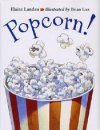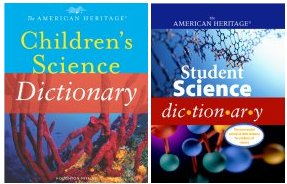Popping to Perfection Additional Information
You can learn more about Bruce Hamaker’s research on popcorn at www.sciencedaily.com/releases/2005/04/050415112829.htm (ScienceDaily).
For additional information on popcorn, go to www.popcorn.org/ (Popcorn Board).
Learn why popcorn pops at ksnn.larc.nasa.gov/webtext.cfm?unit=popcorn(NASA).
A history of popcorn can be found at www.nal.usda.gov/speccoll/images1/popcorn.html (U.S. Department of Agriculture) and www.factmonster.com/spot/popcorn1.html(Fact Monster).
Goho, Alexandra. 2005. The proper popper: Corn kernel’s chemistry is key to its ka-pop. Science News 167(April 30):276-277. Available at http://www.sciencenews.org/articles/20050430/fob4.asp.
For Teachers: Ideas for lesson plans about popcorn can be found at www.education-world.com/a_lesson/03/lp324-02.shtml (Education World).
Books recommended by SearchIt!Science:
 |
Popcorn!— Elaine Landau
Published by Charlesbridge Publishing, 2003.
Where does popcorn come from, and why does it pop? Will any kind of corn pop? What’s the yummiest way to eat popcorn? Find the answers to all of your popcorn questions in this book, whose conversational text is peppered with jokes and fun facts. Learn about where corn is grown and how it is cooked. Brush up on the history of popcorn, from Native American methods of popping popcorn and Aztec popcorn ornaments to the adoption of popcorn as food for movie-goers. Discover why popcorn is good for you, find out how people around the world eat popcorn, and check out some snacking suggestions. Humorous illustrations accompany this lively, informative text. |
Power Words
carbohydrate A chemical compound that is made in green plants by photosynthesis and this is an important source of energy in food. Carbohydrates are made up of carbon, hydrogen, and oxygen. Sugars, starches, and cellulose are all carbohydrates.
cellulose A substance that makes up the cells of plants. Cellulose is a kind of carbohydrate. It is used to make paper, cloth, plastics, and explosives.
crystal A solid made of atoms that are arranged in a particular shape, such as cube or pyramid. The shape is repeated over and over within the solid. Snowflakes and the mineral quartz are examples of substances that form crystals.
Copyright © 2002, 2003 Houghton-Mifflin Company. All rights reserved. Used with permission.
